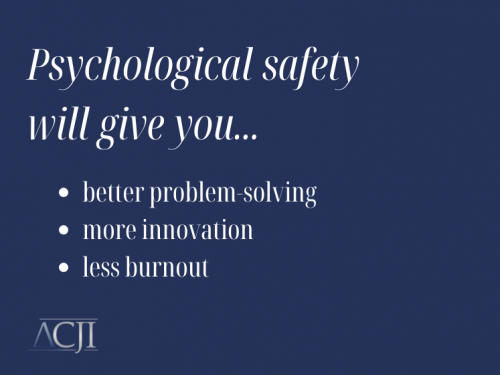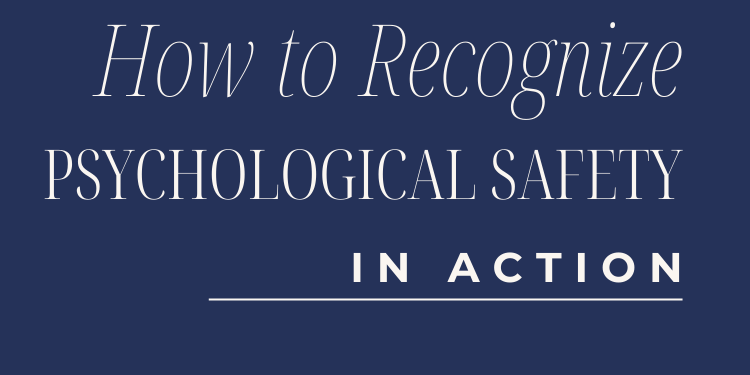In our blog post series on psychological safety, we have so far defined psychological safety and exposed the danger of pseudo-silence. In this third and final post, we address the practical question: How do you recognize psychological safety in action?
Part 3: How to Recognize Psychological Safety in Action
Psychological safety looks like a team of people who may disagree, but still respect one another. It is a fluid feeling for individuals that requires constant awareness of how each person in the room may experience a situation. This can be especially daunting for leaders responsible for the cultural health of a team. To make the job easier, ACJI has identified green and red flags, or indicators of the presence or absence of psychological safety that are quick to spot.

Look for the Green Flags
Green flags show safety is alive in a workplace:
- People admit mistakes and the group treats them as learning moments, not failures.
- Leaders ask for feedback and adapt decisions based on what they hear.
- Diverse voices are heard, not just the loudest or most senior.
- Disagreements are respectful. Conflict strengthens ideas instead of weakening relationships.
- Staff ask for help without fear of looking incompetent.
- Everyone contributes, from front-line staff to executives.
- Leaders model humility, saying things like, “Here’s what I might be missing.”
Look for the Red Flags
These red flags prove there is work to do:
- Meetings are quiet and emails go unanswered. There is little communication among the team.
- Cliques and pairings of people are pervasive enough that some people are clearly left out.
- Phrases like “That’s not how we do it” end many conversations.
- Disagreements turn to arguments. Conflict weakens relationships instead of strengthening them.
- People need help, but they don’t ask for it.
- Leadership doesn’t invite feedback.
What Psychological Safety Feels Like
- You feel included and connected.
- You know your contributions matter.
- You’re free to challenge, question, and innovate.
- You feel safe lifting others up, not just protecting yourself.
Psychological safety is not just what you do. It’s what you allow. Culture is created as much by what you ignore as by what you reward. If you don’t feel psychologically safe at work, difficult conversations are in order.
How can you ask your team members to look for those green and red flags and adjust accordingly? (If you need help asking, start the conversation by sending them a link to this article!)
Why It Matters More Than Ever
In criminal justice and human services, the stakes are high. Staff face trauma, burnout, and complex reforms. Without safety, people shut down. With safety, they lean in. Research backs this up: teams with high psychological safety have better problem-solving, more innovation, and less burnout.

Does Your Culture Include Psychological Safety?
If you want to know whether your team feels psychologically safe, don’t just ask. Watch. Look for:
- Do people laugh naturally?
- Do they ask for help?
- Do they respectfully disagree?
- Do they share credit and elevate others?
If the answer is yes, you’re on the right track to designing a culture where safety is visible, practiced, and celebrated every day.
Want to go deeper? Learn more about ACJI’s Culture Academy, a 10-week program that takes leaders and teams from culture talk to culture action.





